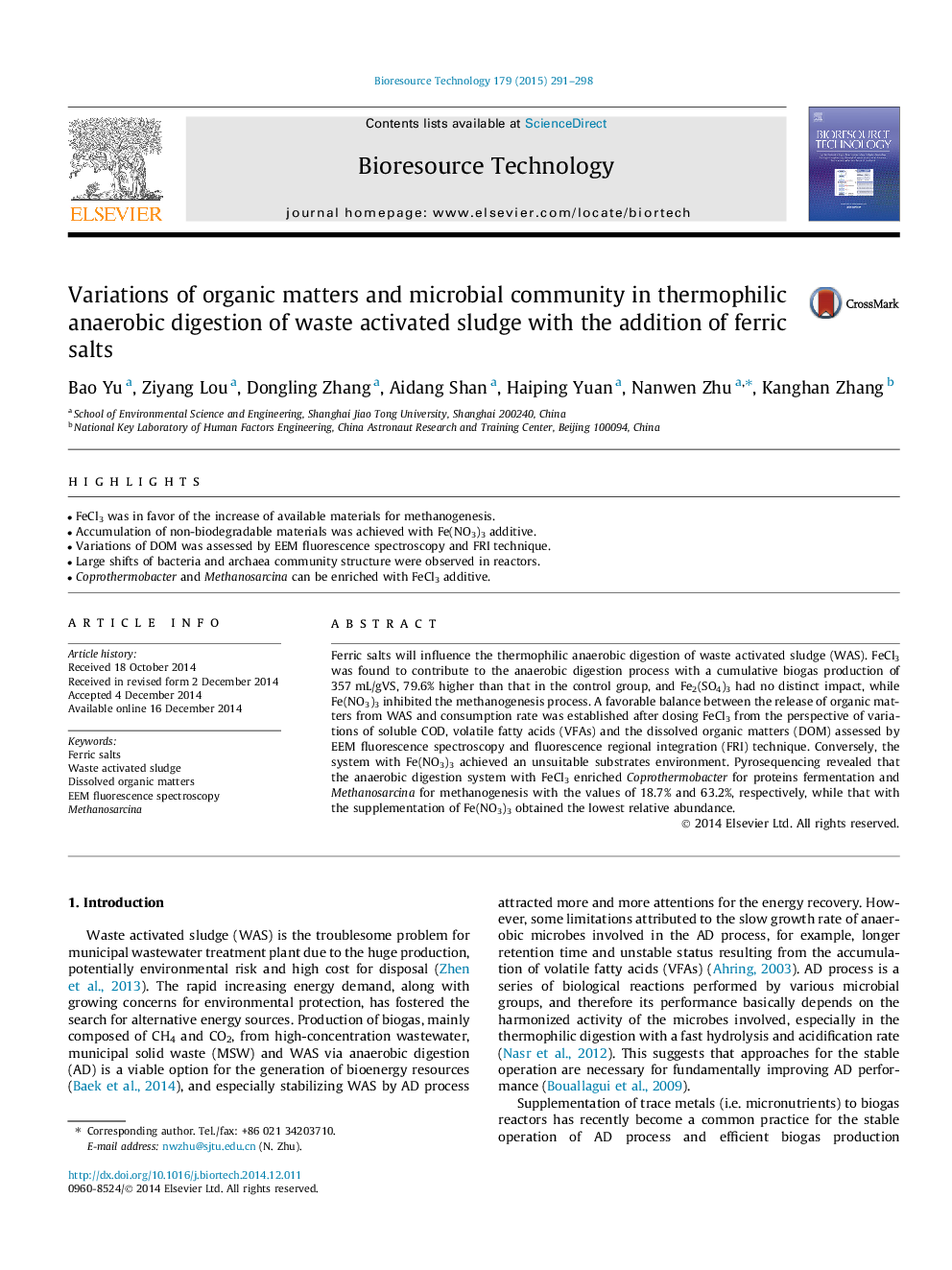| Article ID | Journal | Published Year | Pages | File Type |
|---|---|---|---|---|
| 680124 | Bioresource Technology | 2015 | 8 Pages |
•FeCl3 was in favor of the increase of available materials for methanogenesis.•Accumulation of non-biodegradable materials was achieved with Fe(NO3)3 additive.•Variations of DOM was assessed by EEM fluorescence spectroscopy and FRI technique.•Large shifts of bacteria and archaea community structure were observed in reactors.•Coprothermobacter and Methanosarcina can be enriched with FeCl3 additive.
Ferric salts will influence the thermophilic anaerobic digestion of waste activated sludge (WAS). FeCl3 was found to contribute to the anaerobic digestion process with a cumulative biogas production of 357 mL/gVS, 79.6% higher than that in the control group, and Fe2(SO4)3 had no distinct impact, while Fe(NO3)3 inhibited the methanogenesis process. A favorable balance between the release of organic matters from WAS and consumption rate was established after dosing FeCl3 from the perspective of variations of soluble COD, volatile fatty acids (VFAs) and the dissolved organic matters (DOM) assessed by EEM fluorescence spectroscopy and fluorescence regional integration (FRI) technique. Conversely, the system with Fe(NO3)3 achieved an unsuitable substrates environment. Pyrosequencing revealed that the anaerobic digestion system with FeCl3 enriched Coprothermobacter for proteins fermentation and Methanosarcina for methanogenesis with the values of 18.7% and 63.2%, respectively, while that with the supplementation of Fe(NO3)3 obtained the lowest relative abundance.
